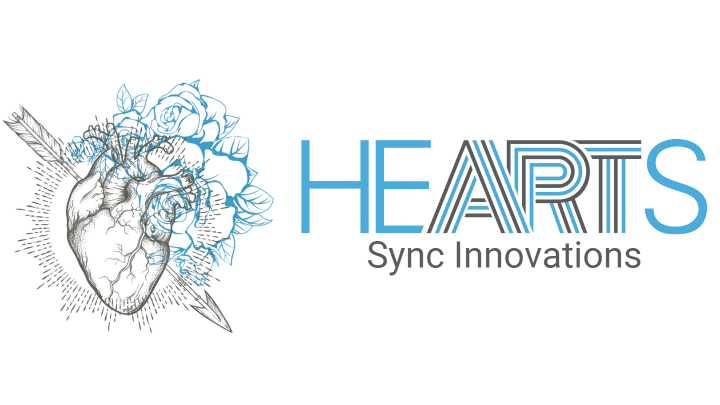Like a smoke detector that goes off early before flames are visible: The body sends warning signals long before a heart attack escalates. Those who can read these subtle hints – in the pulse, in the breathing, in the mood – gain time. Time that protects the arteries, prolongs life, and preserves performance.
A heart attack occurs when a coronary artery suddenly becomes blocked and heart muscle tissue no longer receives oxygen. Early signs often seem unremarkable: pressure or tightness in the chest, radiation into the arm, jaw, or back, unusual shortness of breath with usual exertion, sudden fatigue, cold sweat, nausea. Women more frequently experience atypical symptoms – such as fatigue, shortness of breath, or upper abdominal discomfort. Those who know their own vital signs can detect deviations faster: The pulsethe palpable heart rate at the wrist or neck should usually be between 50 and 90 beats per minute at rest and should beat regularly. Irregularities indicate arrhythmiasdisturbances of normal heart rhythm that may accompany or herald an attack. Hypertensionchronically elevated blood pressure stresses blood vessels, accelerates arterial calcification, and increases the risk of heart attack and stroke. Chronic stress, lack of exercise, and excessive alcohol consumption also negatively impact vascular function, metabolism, and rhythm stability.
Uncontrolled high blood pressure is a central driver of heart attacks; if it persists, the risk of vascular damage, arrhythmias, and acute events significantly increases [1]. Chronic stress – especially financial burdens – measurably raises the risk of heart attacks and affects body fat distribution, lifestyle, inflammatory markers, and glucose metabolism; the waist-to-height ratio proves to be a strong mediator in this context [2]. High alcohol consumption worsens blood pressure, heart muscle, and rhythm, increasing the risk of coronary events; even alcohol amounts above recommended limits practically increase the CHD rate in young and middle-aged adults [3] [4]. A lack of exercise shifts blood lipids, inflammation, and waist circumference in the wrong direction; particularly long periods of uninterrupted sitting are unfavorable, while standing up and short sitting intervals are associated with better cardiometabolic markers [5].
After a heart attack, psychological consequences often go unrecognized: In one study, the majority of patients reported symptoms of depression or anxiety, and two-thirds stated that they were not asked about their mental health in the hospital – a clear mandate for systematic screening and care since psychological distress can influence recovery [6]. A second study after PCI showed that depressive symptoms were associated with worse cardiovascular outcomes, measured by higher event rates, while anxiety had less prognostic power. This makes mental health a substantial cardiological factor – not just a feel-good topic [7]. Meanwhile, a large healthcare dataset shows that alcohol amounts above guideline limits increase the risk of coronary heart disease in both men and women, even after adjusting for classic risk factors; this confirms that the idea of "more is better" with alcohol for heart health does not hold true [4]. Finally, cohort data on sedentary behavior show that not only total time matters, but also structure: longer uninterrupted sitting phases correlate with larger waist circumference, while frequent interruptions and standing are associated with better lipid profiles and lower risk – a finely adjustable lever in daily life [5].
- Attend regular check-ups: Have your blood pressure, lipid profile, and fasting glucose/HbA1c checked. More ideal health metrics reduce the risk of progressing from prehypertension to manifest hypertension [8]. Plan a fixed annual appointment and use home devices for self-monitoring.
- Eat according to cardiological guidelines: Increase intake of vegetables, legumes, whole grains, and fish, while reducing saturated fats, sugars, and salt. Every additional "Healthy Diet" component is associated with fewer stroke/heart attack events [9]. Set a specific weekly goal, such as "200 g of vegetables per day" or "2 fish meals."
- Move wisely and often: Break sitting every 20–30 minutes with 1–2 minutes of standing/walking, ideally complemented by 150–300 minutes of endurance plus 2 strength training sessions per week. Shorter sitting bouts and more standing are linked to favorable blood lipids and smaller waist circumference [5].
- Learn to read your pulse: Check it for 60 seconds on your wrist in the morning. Watch for irregular patterns (skips, "trickling") or persistently high resting pulse. If abnormalities are noted, check with an ECG; smartwatch ECGs and AI models can assist but do not replace a medical diagnosis [10].
- Strictly limit alcohol: Stay below recommended limits or consider "alcohol-free days." Consumption above the limits significantly increases CVD risk [4]; high consumption harms blood pressure, heart muscle, and rhythm [3].
- Actively manage blood pressure: Combine a lower sodium diet, endurance exercise, and possibly medication – avoid "too low" diastolic pressure in older individuals after consultation with a physician [1].
- Take care of your mental health: Monitor anxiety, depression, sleep, and motivation. After a heart attack, depression and anxiety are common and prognostically relevant – early psychological support improves outcomes [6] [7]. Incorporate daily stress reduction (breathing exercises for 5 minutes, walking meditation, social contacts).
Early signals are your allies: Know your pulse, break sitting, monitor blood pressure, improve nutrition, limit alcohol, and take mental health seriously. Start today with a 20-minute window: Check your pulse and blood pressure, take a brisk walk, and plan your next check-up. Build your best self with health science – and shift the risk in your direction.
This health article was created with AI support and is intended to help people access current scientific health knowledge. It contributes to the democratization of science – however, it does not replace professional medical advice and may present individual details in a simplified or slightly inaccurate manner due to AI-generated content. HEARTPORT and its affiliates assume no liability for the accuracy, completeness, or applicability of the information provided.













